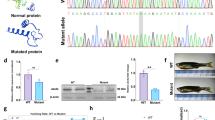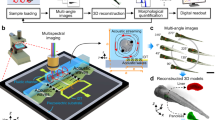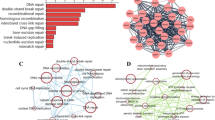Abstract
The biological damage caused by ionizing radiation (IR) depends not only on the time and doses of exposure to tissue components but also on the developmental state of the cells. Currently, amifostine is the only radiation-protective agent used for clinical indications related to radiation therapy, but this compound has multiple drawbacks including high toxicity, short half-life and no protective effect on the nervous system. Ursolic acid (UA), a natural pentacyclic triterpenoid that exhibits multiple protective effects including anti-inflammatory, anticarcinogenic, and antioxidant effects. Due to its poor solubility and bioavailability, UA is mostly administered with liposomes. In this study we investigated the impact of UA312, an optimized derivative of UA, on radiation-induced developmental toxicity in zebrafish embryos and larvae. Embryo and larvae survival were observed at 4, 24, 48, and 72 hpf. UA312 was administered at 3 hpf, while embryos were irradiated with 6 Gy of γ-irradiation (dose rate: 0.88 Gy/min) at 4 hpf, then the embryos were moved to a fresh buffer. We determined that 40 µM of UA312 was a safe concentration for zebrafish embryos and larvae. We found that treatment with UA312 (40 µM) restored IR-induced early developmental dysplasia of the zebrafish embryos and larvae. Transcriptomic analysis revealed that exposure to IR inhibited multiple pathways related to neurodevelopment and cardiomyocyte function in zebrafish, which were validated by assessing abnormal cardiac morphology, variations in neurotransmitter levels and alterations in locomotor behavior; and that UA312 treatment ameliorated these alterations. We demonstrated that UA312 treatment significantly reversed the related signaling pathways by targeting chrna3 and grik5. In conclusion, this study identified a promising radioprotective drug, UA312, which alleviates IR-induced cardiotoxicity and neurodevelopmental toxicity in zebrafish by targeting chrna3 and grik5. UA312 may be developed as a novel radioprotective agent against acute IR damage in humans.
This is a preview of subscription content, access via your institution
Access options
Subscribe to this journal
Receive 12 print issues and online access
$259.00 per year
only $21.58 per issue
Buy this article
- Purchase on SpringerLink
- Instant access to full article PDF
Prices may be subject to local taxes which are calculated during checkout








Similar content being viewed by others
References
Painuli S, Kumar N. Prospects in the development of natural radioprotective therapeutics with anti-cancer properties from the plants of Uttarakhand region of India. J Ayurveda Integr Med. 2016;7:62–68.
Jit BP, Pattnaik S, Arya R, Dash R, Sahoo SS, Pradhan B, et al. Phytochemicals: a potential next generation agent for radioprotection. Phytomedicine. 2022;106:154188.
Hosseinimehr SJ. Trends in the development of radioprotective agents. Drug Discov Today. 2007;12:794–805.
Kouvaris JR, Kouloulias VE, Vlahos LJ. Amifostine: the first selective-target and broad-spectrum radioprotector. Oncologist. 2007;12:738–47.
Liu G, Zeng Y, Lv T, Mao T, Wei Y, Jia S, et al. High-throughput preparation of radioprotective polymers via Hantzsch’s reaction for in vivo X-ray damage determination. Nat Commun. 2020;11:6214.
Sakuma K, Yamaguchi A. Novel intriguing strategies attenuating to sarcopenia. J Aging Res. 2012;2012:251217.
Bakhtiari N, Hosseinkhani S, Soleimani M, Hemmati R, Noori-Zadeh A, Javan M, et al. Short-term ursolic acid promotes skeletal muscle rejuvenation through enhancing of SIRT1 expression and satellite cells proliferation. Biomed Pharmacother. 2016;78:185–96.
Seo DY, Lee SR, Heo JW, No MH, Rhee BD, Ko KS, et al. Ursolic acid in health and disease. Korean J Physiol Pharmacol. 2018;22:235–48.
Senthil S, Chandramohan G, Pugalendi KV. Isomers (oleanolic and ursolic acids) differ in their protective effect against isoproterenol-induced myocardial ischemia in rats. Int J Cardiol. 2007;119:131–3.
Pucci G, Forte GI, Cavalieri V. Evaluation of epigenetic and radiomodifying effects during radiotherapy treatments in zebrafish. Int J Mol Sci. 2021;22:9053.
Howe K, Clark MD, Torroja CF, Torrance J, Berthelot C, Muffato M, et al. The zebrafish reference genome sequence and its relationship to the human genome. Nature. 2013;496:498–503.
Oprisoreanu AM, Ryan F, Richmond C, Dzekhtsiarova Y, Carragher NO, Becker T, et al. Drug screening in zebrafish larvae reveals inflammation-related modulators of secondary damage after spinal cord injury in mice. Theranostics. 2023;13:2531–51.
Suppermpool A, Lyons DG, Broom E, Rihel J. Sleep pressure modulates single-neuron synapse number in zebrafish. Nature. 2024;629:639–45.
Zhang L, Li X, Yuan Q, Sun S, Liu F, Liao X, et al. Isavuconazole induces neurodevelopment defects and motor behaviour impairment in zebrafish larvae. Mol Neurobiol. 2024;61:10072–82.
Gaballah S, Swank A, Sobus JR, Howey XM, Schmid J, Catron T, et al. Evaluation of developmental toxicity, developmental neurotoxicity, and tissue dose in zebrafish exposed to genx and other PFAS. Environ Health Perspect. 2020;128:47005.
Barrett C, Hellickson I, Ben-Avi L, Lamb D, Krahenbuhl M, Cerveny KL. Impact of low-level ionizing radiation on cell death during zebrafish embryonic development. Health Phys. 2018;114:421–8.
Zhao W, Hu N, Ding D, Long D, Li S, Li G, et al. Developmental toxicity and apoptosis in zebrafish embryos induced by low-dose gamma-ray irradiation. Environ Sci Pollut Res Int. 2019;26:3869–81.
Geiger GA, Parker SE, Beothy AP, Tucker JA, Mullins MC, Kao GD. Zebrafish as a “biosensor”? Effects of ionizing radiation and amifostine on embryonic viability and development. Cancer Res. 2006;66:8172–81.
Cousin MA, Ebbert JO, Wiinamaki AR, Urban MD, Argue DP, Ekker SC, et al. Larval zebrafish model for FDA-approved drug repositioning for tobacco dependence treatment. PLoS One. 2014;9:e90467.
Rovira M, Huang W, Yusuff S, Shim JS, Ferrante AA, Liu JO, et al. Chemical screen identifies FDA-approved drugs and target pathways that induce precocious pancreatic endocrine differentiation. Proc Natl Acad Sci USA. 2011;108:19264–9.
Shang Y, Zhang S, Cheng Y, Feng G, Dong Y, Li H, et al. Tetrabromobisphenol a exacerbates the overall radioactive hazard to zebrafish (Danio rerio). Environ Pollut. 2023;316:120424.
Muir WW, Hamlin RL. Myocardial contractility: historical and contemporary considerations. Front Physiol. 2020;31:222. 11
Zhu X, Wang C, Duan X, Liang B, Genbo Xu E, Huang Z. Micro- and nanoplastics: A new cardiovascular risk factor? Environ Int. 2023;171:107662.
Kim Y, Jeon HJ, Kim K, Kim C, Moon JK, Hwang KW, et al. Enantioselective effect of trifloxystrobin in early-stage zebrafish (Danio rerio) embryos: Cardiac abnormalities impacted by E,E-trifloxystrobin enantiomer. Environ Pollut (Barking, Essex : 1987). 2023;327:121537.
Wang J, Li H, Liu Y, Andrzejczyk NE, Qiao K, Ma Y, et al. Contribution of immune responses to the cardiotoxicity and hepatotoxicity of deltamethrin in early life stage zebrafish (Danio rerio). Environ Sci Technol. 2024;58:9515–24.
Gentry CL, Lukas RJ. Local anesthetics noncompetitively inhibit function of four distinct nicotinic acetylcholine receptor subtypes. J Pharmacol Exp Ther. 2001;299:1038–48.
More JC, Nistico R, Dolman NP, Clarke VR, Alt AJ, Ogden AM, et al. Characterisation of UBP296: a novel, potent and selective kainate receptor antagonist. Neuropharmacology. 2004;47:46–64.
Diaz Ruiz A, Mendez Armenta M, Galván Arzate S, Manjarrez J, Nava Ruiz C, Santander I, et al. Antioxidant, anticonvulsive and neuroprotective effects of dapsone and phenobarbital against kainic acid-induced damage in rats. Neurochem Res. 2013;38:1819–27.
Rigotti NA, Benowitz NL, Prochaska J, Leischow S, Nides M, Blumenstein B, et al. Cytisinicline for smoking cessation: a randomized clinical trial. JAMA. 2023;330:152–60.
Rigotti NA, Benowitz NL, Prochaska JJ, Cain DF, Ball J, Clarke A, et al. Cytisinicline for vaping cessation in adults using nicotine e-cigarettes: the orca-v1 randomized clinical trial. JAMA Intern Med. 2024;184:922–30.
Webb AJ, Harper E, Rattay T, Aguado Barrera ME, Azria D, Bourgier C, et al. Treatment time and circadian genotype interact to influence radiotherapy side-effects. A prospective European validation study using the REQUITE cohort. EBioMedicine. 2022;84:104269.
Karaca Y, Beauvois S, Paesmans M, Mokhtari Z, Dequanter D, Wardi CA, et al. Retrospective study evaluating dental side effects of radiotherapy in patients treated for head and neck cancer. J Stomatol Oral Maxillofac Surg. 2024;125:101858.
Cihan YB. Use of botulinum toxin in the management of radiotherapy side effects. Klin Onkol. 2023;36:348–52.
King M, Joseph S, Albert A, Thomas TV, Nittala MR, Woods WC, et al. Use of amifostine for cytoprotection during radiation therapy: a review. oncology. 2020;98:61–80.
Ji L, Cui P, Zhou S, Qiu L, Huang H, Wang C, et al. Advances of amifostine in radiation protection: administration and delivery. Mol Pharmacol. 2023;20:5383–95.
Nisar S, Masoodi T, Prabhu KS, Kuttikrishnan S, Zarif L, Khatoon S, et al. Natural products as chemo-radiation therapy sensitizers in cancers. Biomed Pharmacother. 2022;154:113610.
Fischer N, Seo EJ, Efferth T. Prevention from radiation damage by natural products. Phytomedicine. 2018;47:192–200.
Pitaloka DAE, Syaputri Y, Nurlilasari P, Khairunnisa SF, Saallah S. Promising ursolic acid as a novel antituberculosis agent: current progress and challenges. Drug Des Devel Ther. 2024;18:1969–79.
Chen L, Li F, Ni JH, Hao YX, Feng G, Shen XY, et al. Ursolic acid alleviates lupus nephritis by suppressing SUMO1-mediated stabilization of NLRP3. Phytomedicine. 2024;130:155556.
Besasie BD, Saha A, DiGiovanni J, Liss MA. Effects of curcumin and ursolic acid in prostate cancer: A systematic review. Urologia. 2024;91:90–106.
Hurem S, Martin LM, Lindeman L, Brede DA, Salbu B, Lyche JL, et al. Parental exposure to gamma radiation causes progressively altered transcriptomes linked to adverse effects in zebrafish offspring. Environ Pollut. 2018;234:855–63.
Noemie G, Beatrice G, Virginie C, Isabelle C, Fabien P, Patrice G, et al. Multigenerational exposure to gamma radiation affects offspring differently over generations in zebrafish. Aquat Toxicol. 2022;244:106101.
Zhao W, Mao L, He C, Ding D, Hu N, Song X, et al. Effects of low dose radiation on behavior rhythm of zebrafish (Danio rerio). Ecotoxicol Environ Saf. 2023;255:114779.
Freeman JL, Weber GJ, Peterson SM, Nie LH. Embryonic ionizing radiation exposure results in expression alterations of genes associated with cardiovascular and neurological development, function, and disease and modified cardiovascular function in zebrafish. Front Genet. 2014;5:268.
Zhou R, Si J, Zhang H, Wang Z, Li J, Zhou X, et al. The effects of x-ray radiation on the eye development of zebrafish. Hum Exp Toxicol. 2014;33:1040–50.
Lin E, Shafaattalab S, Gill J, Al-Zeer B, Craig C, Lamothe M, et al. Physiological phenotyping of the adult zebrafish heart. Mar Genomics. 2020;49:100701.
Jiang Y, Li J, Ren F, Ji C, Aniagu S, Chen T. PM2.5-induced extensive DNA methylation changes in the heart of zebrafish embryos and the protective effect of folic acid. Environ Pollut. 2019;255:113331.
Vornanen M, Hassinen M. Zebrafish heart as a model for human cardiac electrophysiology. Channels (Austin). 2016;10:101–10.
Nemtsas P, Wettwer E, Christ T, Weidinger G, Ravens U. Adult zebrafish heart as a model for human heart? An electrophysiological study. J Mol Cell Cardiol. 2010;48:161–71.
Hou Y, Shang Y, Xu F, Li T, Li M, Wei L, et al. Ionizing radiation induces neurotoxicity in Xenopus laevis embryos through neuroactive ligand-receptor interaction pathway. Environ Res. 2024;256:119237.
Borg M. Radiation injury to the rectum and amifostine. Support Cancer Ther. 2006;3:251–3.
Singh VK, Seed TM. The efficacy and safety of amifostine for the acute radiation syndrome. Expert Opin Drug Saf. 2019;18:1077–90.
Shibao CA, Joos K, Phillips JA 3rd, Cogan J, Newman JH, Hamid R, et al. Familial autonomic ganglionopathy caused by rare chrna3 genetic variants. Neurology. 2021;97:e145–e155.
Petroff OA. GABA and glutamate in the human brain. Neuroscientist. 2002;8:562–73.
Ribeiro FM, Vieira LB, Pires RG, Olmo RP, Ferguson SS. Metabotropic glutamate receptors and neurodegenerative diseases. Pharmacol Res. 2017;115:179–91.
Xie Z, Ke Y, Li Z, Chen J, Lei D, Chen G, et al. GRIK5 stimulates colon cancer growth and metastasis through cAMP/PKA/CADM3 signaling. Cell Biol Int. 2023;47:1259–66.
Chew LJ, Yuan X, Scherer SE, Qie L, Huang F, Hayes WP, et al. Characterization of the rat GRIK5 kainate receptor subunit gene promoter and its intragenic regions involved in neural cell specificity. J Biol Chem. 2001;276:42162–71.
Acknowledgements
This work was supported by the National Natural Science Foundation of China (82202950, 82104012 and 82303681), the Chinese Academy of Medical Sciences Innovation Fund for Medical Sciences (2021-I2M-1-042), the Chinese Academy of Medical Sciences Innovation Fund for National Medical Health Science and Technology Platform (2022-I2M-2-003), and Natural Science Foundation of Tianjin City (24JCQNJC01100).
Author information
Authors and Affiliations
Contributions
FFX, YS, HQW, and WYZ designed, conducted, and validated the experiments. FFX and YS drafted the manuscript. HQW and WYZ collected and analyzed the data. LXW and TH performed zebrafish feeding and embryo collection. SQZ, YLL, HHS, and WBH involved in regular discussions and manuscript revisions. WFG, SJF, and YLL designed, reviewed and revised the paper. All the authors revised and approved the manuscript. FFX, HQW, WFG, SJF, and YLL provided funding support.
Corresponding authors
Ethics declarations
Competing interests
The authors declare no competing interests.
Additional information
Publisher’s note Springer Nature remains neutral with regard to jurisdictional claims in published maps and institutional affiliations.
Supplementary information
Rights and permissions
Springer Nature or its licensor (e.g. a society or other partner) holds exclusive rights to this article under a publishing agreement with the author(s) or other rightsholder(s); author self-archiving of the accepted manuscript version of this article is solely governed by the terms of such publishing agreement and applicable law.
About this article
Cite this article
Xu, Ff., Shang, Y., Wei, Hq. et al. Ursolic acid derivative UA312 ameliorates ionizing radiation-induced cardiotoxicity and neurodevelopmental toxicity in zebrafish via targeting chrna3 and grik5. Acta Pharmacol Sin 46, 2677–2692 (2025). https://doi.org/10.1038/s41401-025-01564-0
Received:
Accepted:
Published:
Issue date:
DOI: https://doi.org/10.1038/s41401-025-01564-0



